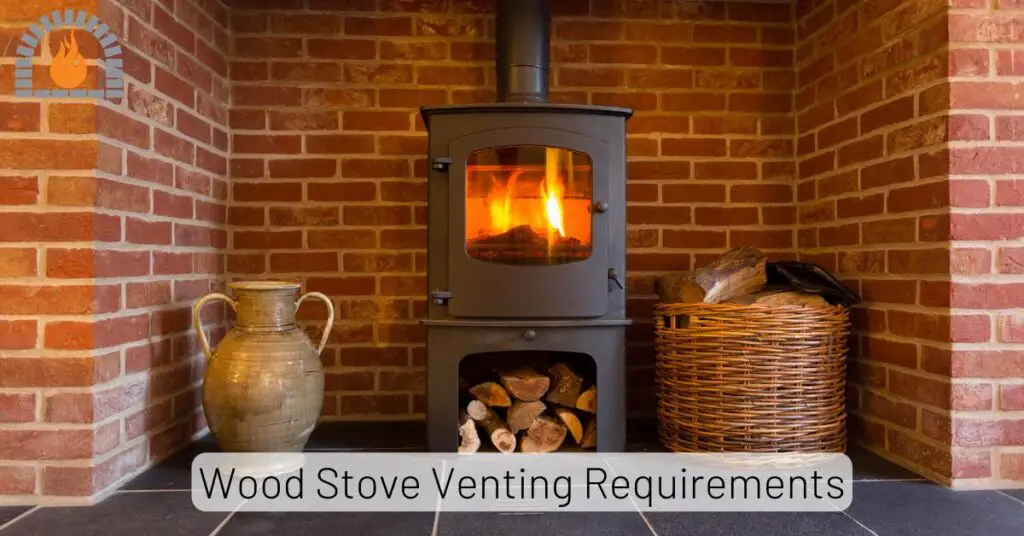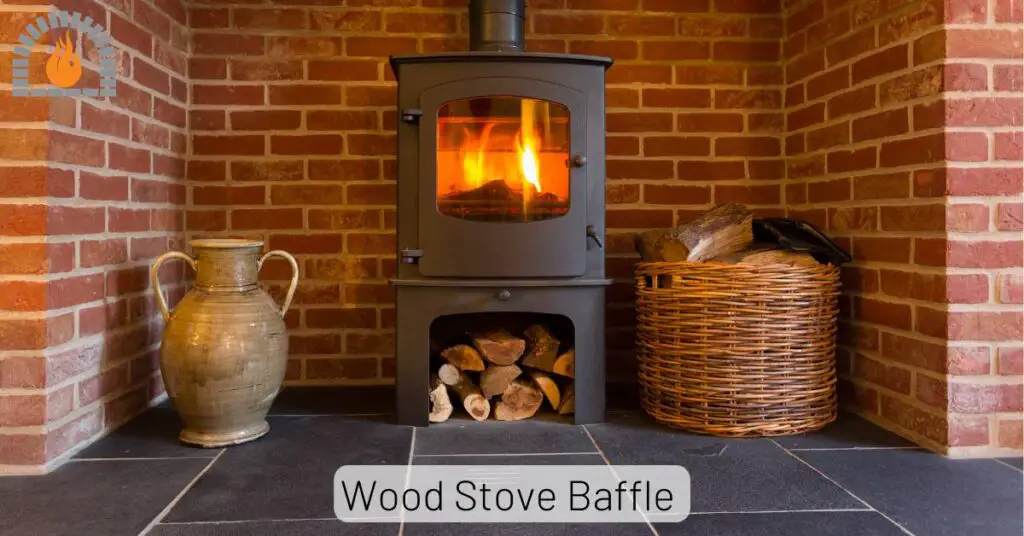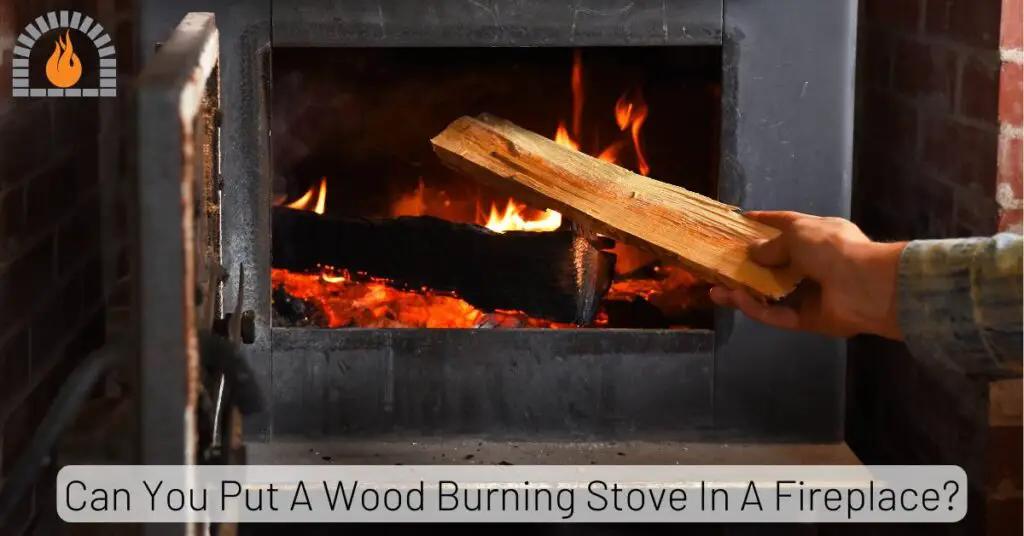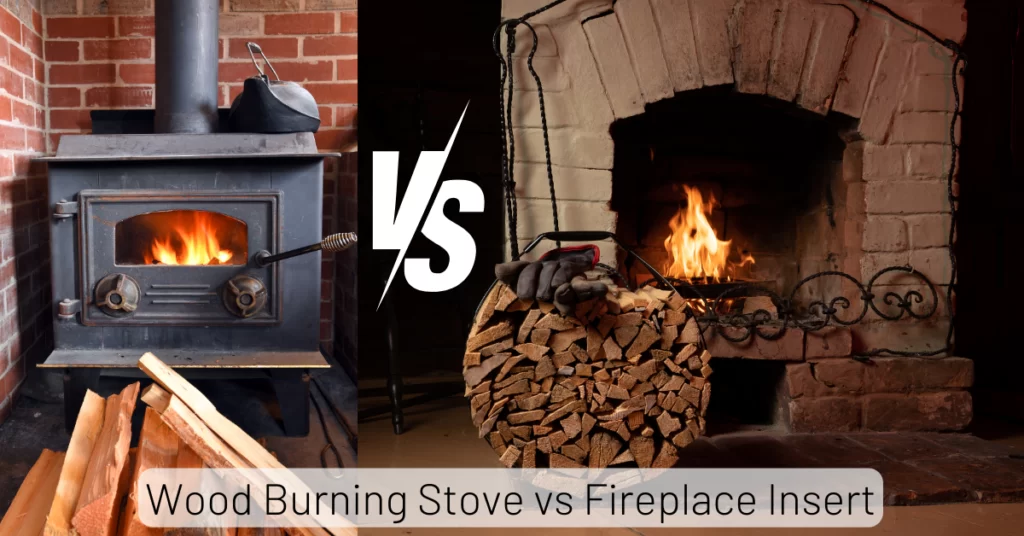A wood burning stove thermometer is an essential tool that helps you maintain optimal combustion temperatures, improve efficiency, and prevent dangerous creosote buildup in your chimney. Proper wood burning stove thermometer placement is crucial for accurate readings that ensure your stove operates safely and efficiently.
When positioned correctly, these simple devices can extend the life of your wood stove, reduce fuel consumption, and significantly lower the risk of chimney fires. This comprehensive guide will walk you through everything you need to know about where to place a wood stove thermometer for maximum effectiveness and safety.
Key Takeaways
- Proper wood burning stove thermometer placement is essential for accurate temperature monitoring
- There are three main types of thermometers: stove surface, stovepipe, and flue gas thermometers
- The ideal placement location depends on the type of thermometer you’re using
- Correct positioning helps maintain optimal combustion temperatures (250-475°F surface, 400-800°F flue gas)
- Proper thermometer use can improve stove efficiency by up to 30% and prevent dangerous creosote buildup
- Regular maintenance and calibration ensure continued accuracy
Optimal Wood Burning Stove Thermometer Placement
Now let’s dive into the specifics of where to place different types of thermometers for the most accurate readings and safest operation.
Stove Surface Thermometer Placement
For magnetic stove surface thermometers, placement location is crucial for accurate readings:
- Top Surface Placement: The most common location is on the top surface of the stove, about 6-8 inches from the flue collar. This position gives a good indication of overall stove temperature.
- Side Surface Placement: Alternatively, you can place the thermometer on the side of the stove, approximately midway up the stove body. This location can be useful if your stove design makes top placement impractical.
- Avoiding Hot Spots: Never place the thermometer directly above the firebox or on areas that get unusually hot, as this will give skewed readings.
- Distance from Edges: Position the thermometer at least 2 inches from any edges to avoid the cooling effect of air circulation.
According to the Wood Heat Organization, surface thermometers should be placed on a flat, clean surface that represents the average temperature of the stove body.
Stovepipe Thermometer Placement
Stovepipe thermometers provide more accurate readings about what’s happening in your flue system:
- Distance from Stove: Install the thermometer 12-18 inches above the stove on single-wall stovepipe. This distance allows the gases to stabilize for more accurate readings.
- Vertical Position: Place the thermometer on the top or side of the horizontal section of stovepipe, ensuring it’s in direct contact with the metal.
- Avoiding Obstructions: Never install a stovepipe thermometer near elbows, tees, or other fittings that might disrupt gas flow.
- Double-Wall Pipe Considerations: If you have double-wall or insulated stovepipe, you’ll need a specialized thermometer designed for this application, as standard magnetic thermometers won’t give accurate readings.
The Chimney Safety Institute of America recommends stovepipe thermometers as one of the most effective tools for preventing creosote-related chimney fires when properly placed and monitored.
Flue Gas Thermometer Placement
Flue gas thermometers require more specialized installation:
- Sampling Point: Install in the flue system at a point where it can sample the exhaust gases without being directly in the path of the highest velocity flow.
- Thermowell Installation: These thermometers typically require installation through a thermowell (a protective tube) that’s inserted into the flue system.
- Professional Installation: Due to the complexity of installation and the critical nature of accurate readings, professional installation is recommended for flue gas thermometers.
Understanding Wood Stove Thermometers: Types and Functions
Before diving into placement specifics, it’s important to understand the different types of thermometers available for wood burning stoves. Each type serves a specific purpose and requires different placement considerations.
Stove Surface Thermometers
Stove surface thermometers are designed to measure the temperature of your stove’s exterior surface. These magnetic thermometers attach directly to the stove body and provide a general indication of how hot your stove is operating. They’re the most common and affordable option for most wood stove owners.
Stovepipe Thermometers
Stovepipe thermometers, also known as flue thermometers, measure the temperature of the gases as they exit the stove through the stovepipe. These provide a more accurate indication of combustion efficiency than surface thermometers and are crucial for preventing creosote formation.
Flue Gas Thermometers
Flue gas thermometers are more advanced instruments that measure the temperature of exhaust gases within the flue system. These are typically used by professionals or serious wood heating enthusiasts who want precise control over their stove’s performance.
Table: Comparison of Wood Stove Thermometer Types
| Thermometer Type | Placement Location | Temperature Range | Best For | Price Range |
|---|---|---|---|---|
| Stove Surface | On stove body | 100-900°F | General monitoring | $10-30 |
| Stovepipe | On single-wall stovepipe | 100-900°F | Creosote prevention | $15-40 |
| Flue Gas | In flue system | 100-2000°F | Professional use | $50-200 |
Step-by-Step Installation Guide
Proper installation is just as important as placement for ensuring accurate readings. Here’s how to install your wood stove thermometer correctly:
Installing a Stove Surface Thermometer
- Clean the Surface: Thoroughly clean the area where you’ll place the thermometer with a wire brush or sandpaper to remove any dirt, rust, or oxidation.
- Check Magnetic Strength: Test the magnet to ensure it has sufficient strength to stay in place during operation.
- Position the Thermometer: Place the thermometer in your chosen location, ensuring it sits flat against the stove surface.
- Secure if Necessary: Some thermometers come with small screws for additional security. If yours does, consider using them for a more permanent installation.
- Allow for Expansion: Remember that metal expands when heated, so don’t overtighten any screws.
Installing a Stovepipe Thermometer
- Select the Location: Choose a spot on single-wall stovepipe 12-18 inches above the stove.
- Clean the Pipe: Use a wire brush to clean the area thoroughly.
- Drill a Small Hole (if required): Some thermometers require a small hole for the probe. If yours does, drill according to the manufacturer’s instructions.
- Position the Thermometer: Attach the thermometer so it makes good contact with the pipe surface.
- Check for Air Leaks: Ensure the installation doesn’t create any air leaks in your stovepipe system.
The Science Behind Thermometer Placement
Understanding why proper placement matters requires some basic knowledge of wood combustion physics. When wood burns, it goes through several stages, each producing different temperatures and byproducts.
Combustion Zones and Temperature Ranges
Wood combustion occurs in three main zones:
- Primary Combustion Zone: Where initial burning occurs (typically 400-600°F)
- Secondary Combustion Zone: Where gases and particulates burn off (600-800°F)
- Heat Exchange Zone: Where heat transfers to the stove body (800-1200°F)
Each zone affects different parts of your stove system, which is why where to place a wood stove thermometer is so critical for getting accurate readings.
Temperature and Creosote Formation
Creosote, a highly flammable byproduct of incomplete wood combustion, forms when flue gases drop below 250°F. Proper thermometer placement helps you ensure that temperatures stay high enough to prevent creosote buildup while not getting so hot that you damage your stove or waste energy.
Temperature Zones:
- Too Cool (Below 250°F) – Creosote formation zone
- Ideal (250-475°F) – Optimal efficiency for surface thermometers
- Too Hot (Above 475°F) – Wasted energy, potential stove damage
- For Stovepipe Thermometers:
- Too Cool (Below 300°F) – Creosote formation
- Ideal (300-500°F) – Good combustion
- Too Hot (Above 500°F) – Wasted energy, chimney fire risk
Reading and Interpreting Your Thermometer
Once your thermometer is properly placed and installed, understanding how to read and interpret the information is crucial for safe and efficient operation.
Understanding Temperature Zones
Most wood stove thermometers have color-coded zones that indicate different operating conditions:
- Cool Zone (typically below 250°F for surface, 300°F for flue): Indicates incomplete combustion, leading to creosote formation and poor efficiency.
- Ideal Zone (250-475°F for surface, 300-500°F for flue): The optimal range for efficient combustion and heat output.
- Hot Zone (above 475°F for surface, 500°F for flue): Indicates excessive heat that can waste fuel, damage your stove, and increase the risk of a chimney fire.
Adjusting Your Fire Based on Readings
Learning to adjust your fire based on thermometer readings is key to efficient operation:
- Too Cool: If readings are in the cool zone, increase air supply to raise the temperature. You may also need to add more wood or adjust the wood load.
- Too Hot: If readings are in the hot zone, reduce the air supply to lower the temperature. Avoid completely starving the fire of oxygen, as this can lead to incomplete combustion and increased creosote production.
- Ideal Range: Once you’re in the ideal range, make small adjustments to maintain steady temperatures.
Maintenance and Troubleshooting
Like any tool, wood stove thermometers require regular maintenance to ensure accuracy and longevity.
Regular Maintenance
- Cleaning: Periodically remove and clean your thermometer to remove soot and residue that can affect accuracy.
- Calibration Checks: Compare your thermometer’s readings with a known accurate thermometer periodically to ensure it’s still calibrated correctly.
- Magnet Check: For magnetic thermometers, check that the magnet still has sufficient strength to hold the thermometer securely in place.
Common Troubleshooting Issues
- Inaccurate Readings: If your thermometer seems to be giving inaccurate readings, first check that it’s clean and properly positioned. If problems persist, it may need to be replaced.
- Falling Off: If a magnetic thermometer keeps falling off, the magnet may be weakened. Consider replacing it or using a small amount of high-temperature adhesive to secure it.
- Condensation Issues: If condensation forms on your thermometer, it may indicate that your flue gases are too cool, leading to creosote formation. Increase combustion temperature to resolve this issue.
Safety Considerations
Proper wood burning stove thermometer placement isn’t just about efficiency—it’s also a critical safety consideration.
Preventing Chimney Fires
One of the most important safety functions of a properly placed thermometer is preventing chimney fires:
- Monitor Creosote Formation: By keeping flue temperatures above 250°F, you prevent the condensation of flue gases that forms creosote.
- Avoid Over-Firing: Thermometers help you avoid over-firing your stove, which can damage the stove and chimney system and increase fire risk.
- Early Warning System: Sudden changes in temperature readings can serve as an early warning system for potential problems.
Protecting Your Investment
A quality wood stove is a significant investment, and proper thermometer use helps protect that investment:
- Preventing Damage: Operating your stove within the recommended temperature range prevents warping, cracking, and other heat-related damage.
- Extending Lifespan: Proper operation can extend the life of your stove by many years.
- Maintaining Efficiency: Consistent, efficient operation reduces wear and tear on stove components.
Advanced Tips for Maximum Efficiency
Once you’ve mastered the basics of thermometer placement and use, these advanced tips can help you get even more from your wood stove:
Using Multiple Thermometers
For the most comprehensive monitoring, consider using multiple thermometers:
- Surface and Stovepipe Combination: Using both a surface and stovepipe thermometer gives you a more complete picture of your stove’s operation.
- Multi-Point Monitoring: Placing thermometers at different locations can help identify hot spots or areas of inefficient operation.
Seasonal Adjustments
Different seasons may require different operating strategies:
- Cold Weather Operation: During extremely cold weather, you may need to run your stove hotter to maintain comfortable temperatures.
- Mild Weather Operation: In milder weather, you may need to adjust your burning practices to avoid overheating your living space.
Wood Quality Considerations
The quality of your wood significantly affects temperature readings:
- Moisture Content: Properly seasoned wood (20% moisture or less) burns hotter and more efficiently than green wood.
- Wood Species: Different wood species have different heat outputs and burning characteristics, which will affect your temperature readings.
You May Also Like To Read:
FAQs
Can I place a wood stove thermometer on a double-wall stovepipe?
Standard magnetic thermometers are not designed for use with double-wall or insulated stovepipes, as they won’t give accurate readings due to the insulation between the inner and outer walls.
For double-wall pipe, you’ll need a specialized thermometer designed for this application, typically one that requires drilling a small hole to access the inner pipe temperature.
How often should I check my wood stove thermometer?
During normal operation, you should check your thermometer at least every 30 minutes to ensure your stove is operating in the ideal temperature range. When first starting a fire or making significant adjustments, you may want to check it more frequently until the temperature stabilizes.
What should I do if my thermometer readings seem inaccurate?
If you suspect your thermometer is giving inaccurate readings, first clean it thoroughly and ensure it’s properly positioned. If problems persist, you can test its accuracy by comparing it with a new thermometer or a digital infrared thermometer. Most analog thermometers have a lifespan of 2-3 years with regular use, so it may simply be time for a replacement.
Can I use a regular kitchen thermometer on my wood stove?
No, kitchen thermometers are not designed to withstand the high temperatures of wood stove operation. They can melt, give inaccurate readings, or even explode if exposed to temperatures beyond their design limits. Always use a thermometer specifically designed for wood stove applications.
Is it normal for my thermometer to read differently when I’m using different types of wood?
Yes, different wood species have different heat outputs and burning characteristics, which will result in different temperature readings. Hardwoods like oak and maple generally burn hotter and longer than softwoods like pine and fir, which will be reflected in your thermometer readings.
Affiliate Disclosure: Fireplaceadviser.com is a participant in the Amazon Services LLC Associates Program. We may earn a commission when you click on certain links on this site and purchase.

Hello!! I am Jamal Khan. I often fix my home electric heaters and gas stove problems and research the common issues in the heating units to improve my knowledge and expertise. The aim of establishing fireplaceadviser.com is to share my expertise and knowledge with my audience.
















